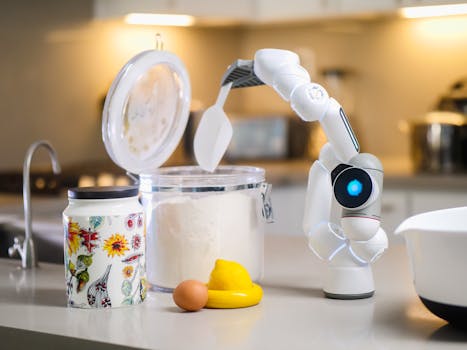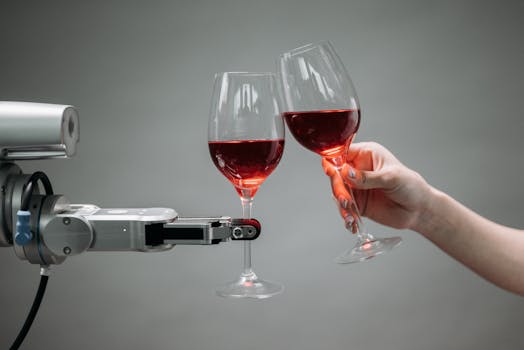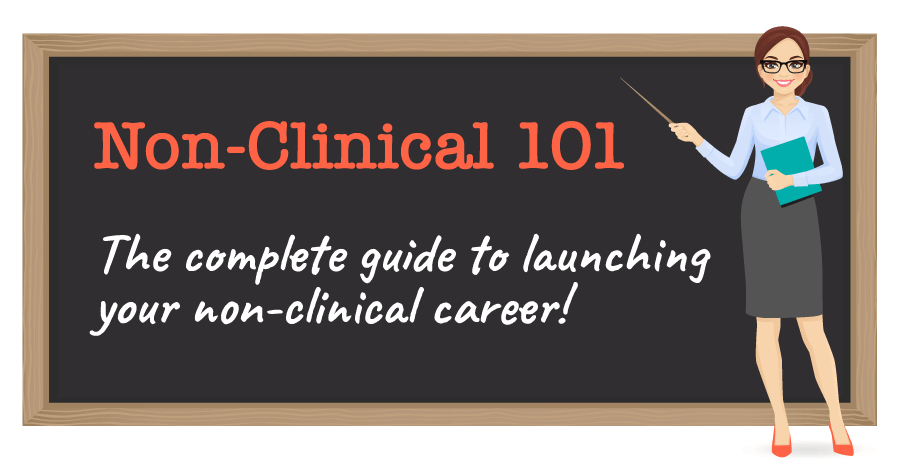If you’re like most rehab clinicians — especially if you eventually see yourself leaving patient care — you probably have major questions about artificial intelligence (AI).
You might be asking yourself any of the following questions:
- Is AI going to eliminate most non-patient-facing jobs?
- Do I need to become a coder or some sort of AI engineer?
- Should I just stay in patient care and hope the robots don’t take over my job?
- If the robots DO take over my job, is it wrong to be super happy about it?
All jokes aside, this series will answer those questions and more, showing you how to harness the power of AI as you plot out your ideal career path.
If you’re rolling your eyes and thinking, “AI…that’s for techies, not for me!” – hold on a sec. You’ve probably already heard the buzz around tools like ChatGPT, Gemini, and Claude, but might be wondering how they relate to you or how to best use them. And who’s Claude anyway!? 😂
This article isn’t about jumping on some tech trend that might not even be a stable career path.
Instead, we’ll be sharing how AI is already changing the game in healthcare, and how you can use that to your advantage, especially if you’re eyeing a non-clinical career.
The AI landscape is evolving at lightning speed—so rapidly that keeping this article continuously updated would be nearly impossible! Instead, our focus is on giving rehab professionals the essential knowledge, terminology, and baseline skills to better understand AI and how it fits into healthcare (and non-clinical roles).
This is the first post in a series all about AI. We’ve specifically written this series for rehab folks, to cut through the noise and show you exactly how to best leverage these new tools.
We’ll keep it jargon-light and practical, promise 😇
And, if you’re already 100% on board with AI and are using it regularly for your career, please share your experience in the comments!
This post may contain affiliate links or codes. This won’t increase your cost, but it helps keep TNCPT alive, and free of annoying ads! Thank you for your support. 🙂
Why Should PTs, OTs, and SLPs Care About AI?
If you’re hesitant to embrace AI in your career, we get it. It can be intimidating. Maybe you’ve tried it before and had lackluster results. Maybe it doesn’t even feel relevant to your work right now.
But hear us out: AI is transforming the way we work. From AI-assisted motion analysis on the clinical side to speeding up all sorts of non-clinical tasks, workplaces everywhere are evolving to incorporate AI. Having a basic understanding of the technology and its use in healthcare (and beyond) is an important step in future-proofing your career.
Not to mention, proficiency with AI will give you a HUGE advantage when applying and interviewing for your next job 🙂
Here’s the deal: AI isn’t just a futuristic fantasy. It’s here, it’s happening, and it’s creating opportunities. Whether you’re:
- Dreaming of a non-clinical role: AI skills are becoming a HUGE asset in almost all fields, including health tech, consulting, customer success, marketing, education, and more.
- Hoping to reclaim your time: AI can streamline your workflows, automate tedious tasks, and free you up to focus on what matters most – whether that’s helping your patients or fleeing them in favor of non-clinical work!
- Thinking about starting your own business: AI can be your secret weapon for marketing, automation, and scaling your reach.
- Looking to be more marketable to future employers: AI proficiency is one of the most sought-after employee assets on employers’ wishlists!
…understanding AI is becoming less of an “option” and more of a “necessity.”
AI 101: The Basics (Without the Brain Melt)
So, what is AI, really? In the simplest terms, AI is about making computers do things that usually require human smarts – things like learning, solving problems, and making decisions. It’s not about sentient robots; it’s about giving machines the ability to analyze information and respond in intelligent ways. It’s helpful to know the difference between AI, automation, and machine learning.
Definitions:
Artificial intelligence: the big umbrella
Think of it like this: AI is the massive umbrella that encompasses all sorts of things, including automation, machine learning, and generative AI, all of which we’ll explain below.
Automation: following commands
Automation is the simplest form of AI. Automation is all about making a computer follow a specific set of rules.
Think of it like this: a computer can be told to automatically send a confirmation email after a purchase. The computer doesn’t learn or adapt; it just does what it’s told.

Machine learning: making sense of existing data
Machine Learning (ML) is also under the AI umbrella, but it’s more sophisticated. ML is about giving computers the ability to learn from data, without being explicitly programmed for every scenario.
Think of it like this: instead of telling a computer exactly how to identify a cat in a picture, you feed it thousands of cat pictures, and it learns to recognize cats on its own.

Generative AI: creating new data
Generative AI takes things a step further. While machine learning is often about understanding and interpreting data, generative AI actually creates new data.
Think of it like this: a chef who, after learning from countless recipes, can invent entirely new dishes. This is how AI can create realistic images, write articles, or even compose music.

How does all of this work?
The technology behind much of the AI you hear about is powered by Large Language Models (LLMs). LMMs use a relatively new technique called a Transformer (the “T” in ChatGPT).
LLMs are based on a massive amount of text data – everything from books and articles to websites and social media posts. By analyzing all these words, sentences, and ideas, the LLM learns the patterns of human language and can generate remarkably human-like text.
They’re even trained using feedback from real people to make their responses more natural, helpful, and safe.
Before we dive deeper…
There are valid concerns out there about how all this data was gathered – and we get it. Questions about copyright and intellectual property are definitely worth exploring, and we encourage everyone to make informed choices.
On that note, we know you probably have serious questions about the applications of AI in healthcare. For example, how does AI take into account:
- Privacy and HIPAA compliance
- Evidence-based information vs. misinformation
- Ethical considerations
- Cost and access
- Potential bias in AI algorithms
- The patient-provider therapeutic relationship
- …and more?
We hear you. These are all important considerations. We’ll address these and other frequently asked questions in Part 2 of this article.
In practical terms, it’s helpful to understand AI by considering how it’s used. Sometimes, AI is integrated into existing software and applications. Think of your EMR that suggests possible diagnoses or billing codes based on your notes – that’s AI, often using Machine Learning, working behind the scenes. It’s enhancing something that already exists.
Other times, AI is the foundation for entirely new applications. This could be a telehealth platform that uses AI to analyze patient movement patterns during virtual therapy sessions, or a diagnostic tool that identifies subtle indicators of a condition earlier than a human might. These are brand-new tools built around AI capabilities.
Finally, you have AI-powered chatbots, like ChatGPT, Gemini, or Claude. These are designed to interact with users in a conversational way. You can ask them questions, give them tasks (like writing a draft of an email or summarizing research), and they respond using their vast knowledge base and language processing abilities.
What’s in a chatbot?
Ever wonder what’s happening behind the scenes when you use a chatbot? It’s a fascinating process!
First, you type in your question or request. The chatbot uses something called “natural language processing” (NLP) to understand what you’re asking – the meaning, the context, and what you’re trying to achieve. Then, it searches its vast training data to find the most relevant information. Finally, it uses generative AI to create a coherent and helpful response, in plain English.
But here’s the thing: even with all that training, AI isn’t always perfect. Sometimes, a chatbot can “hallucinate,” meaning it produces an answer that’s misleading or just plain wrong.
This can happen for a few reasons: maybe your question was ambiguous, maybe the AI’s training data was incomplete, or maybe it just didn’t have enough context. It is important to always consider the source.
What’s the deal with ChatGPT? And Claude? And Gemini?
You might also be wondering why there are so many different AI models out there (ChatGPT, Claude, Gemini, etc.). It’s kind of like having different specialists for different tasks. Some models are better at creative writing, while others are stronger at summarizing information or coding. Each model is also guided by its own set of principles, which can affect how it responds.
If you experiment with using each model of AI, you will see which ones excel at different tasks.
The crucial thing to remember is that AI, in all these forms, should always be considered a tool. It’s designed to augment human capabilities, not replace them. It’s about making complex tasks easier, faster, and more efficient, freeing up your time and expertise for the things that truly require a human touch. And understanding the different ways AI is applied is key to seeing its potential in your career.
What’s Next?
So, you’ve now got a solid foundation in AI. You understand what it is (and isn’t!), how it’s already impacting the rehab world, and why it’s crucial for your career, whether you’re staying in patient care or dreaming of a non-clinical transition. You’ve even learned the difference between automation, machine learning, generative AI, and large language models.
You’re practically an AI whisperer! 😉
But knowing is only half the battle. Now it’s time to put that knowledge into action. In Part 2 of our AI for rehab series, we’ll move from theory to practice, and we’ll give you a step-by-step action plan to get started. We’ll focus on choosing the right tools for your specific needs, and mastering the art of the prompt. Plus, we’ll discuss how to use AI to craft compelling resumes and cover letters that get you noticed, as well as address your burning questions regarding ethics, accuracy, job security, and HIPAA compliance.
The AI revolution is here, and it’s filled with opportunities for rehab professionals who are ready to embrace it. Be sure to check out Part 2 and discover how to make AI your non-clinical superpower! The products and services that will be created will need actual humans to build, sell and support them. What part will you play?






